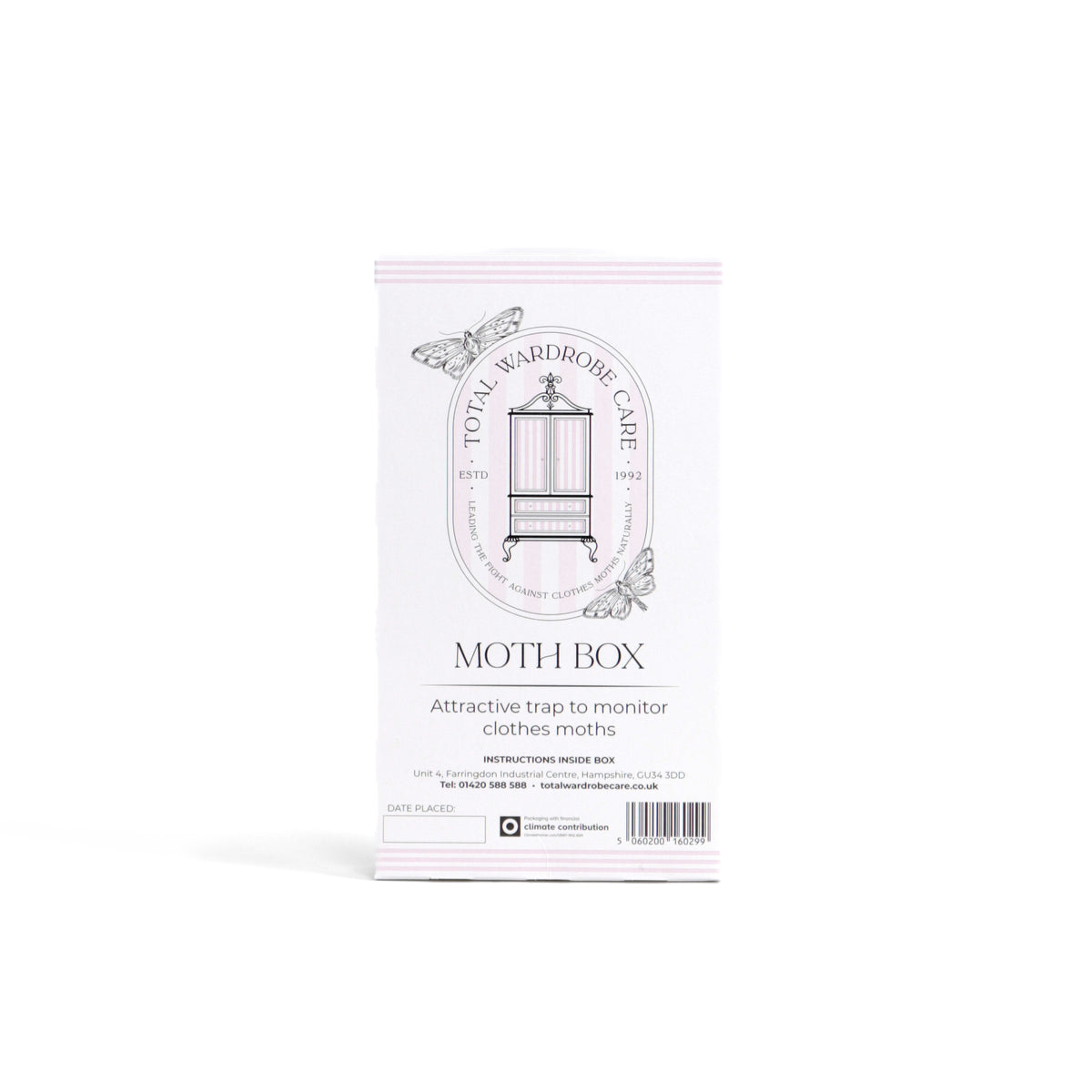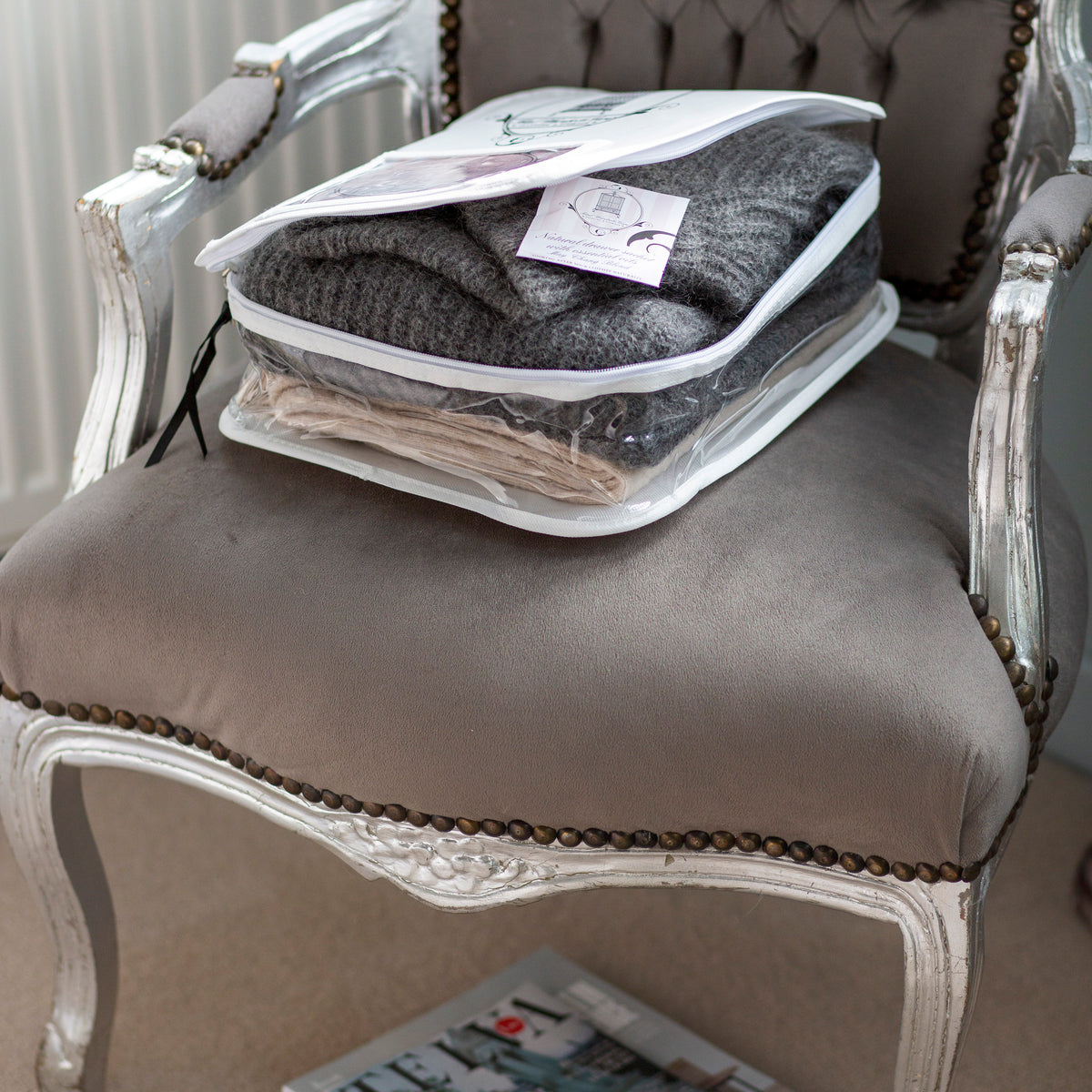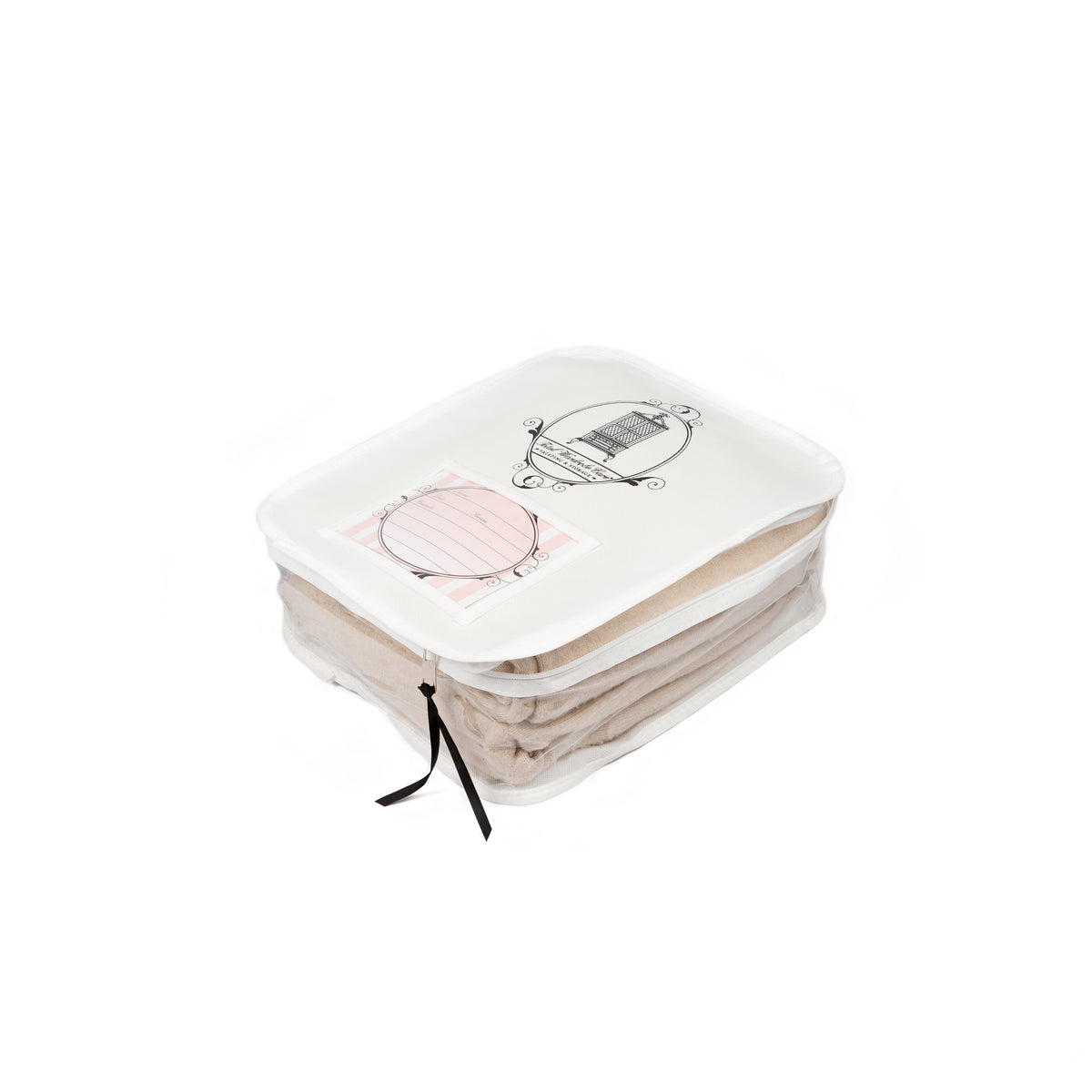CARPET MOTHS: HOW TO IDENTIFY, TREAT AND PREVENT INFESTATIONS
When identifying a small pest in your home, It is very important to understand that Carpet moths and Clothes moths are exactly the same species of moth. They have commonly been given nicknames depending on where they are found in your home. There are two species of moth that cause the most damage in our homes. They are the Common Webbing Moth, Tineola bisselliella and the Case bearing Moth, Tinea Pellionella.
These moths are notorious for their appetite for natural animal derived fibres, including wool, cashmere, silk, feathers and fur. These fibres contain a natural protein, called Keratin, which is also found in the dust in our homes which comes from our hair and skin cells as well as food splats and soiled clothing.
The Common webbing moth are typically pale beige or gold and measure around 6-8mm in length which makes them easy to identify. You may see adults flying around trying to find a mate, and they are looking for a dark and undisturbed place to lay their eggs, with a food source readily available for their offspring, the larvae that emerge. The larvae then spin a cocoon, disguising themselves in the fabric, from which they will emerge once conditions are right.
They prefer a warmer climate, which is why the height of activity is between March and October, but once they are in your home, with the central heating on, the perfect conditions for reproduction are all year round. The Case bearing moth is of similar size but is brown mottled with smaller black spots. Their breeding cycle is similar to the Webbing moth, but uniquely they build themselves a portable home in the form of a case, which is woven with the fibres and hair which they can hide in. The larvae can live for a long time in this case, feeding and causing a great deal of damage before it pupates.
So, If you've noticed mysterious bald patches on your carpet or small, rice-like larvae lurking in your home, chances are you may have a carpet moth infestation. But don't worry, Julia, the founder of Total Wardrobe Care, is here to provide her expert advice on how you can protect your home and eliminate these pests for good.
 WHERE DO CARPET MOTHS COME FROM?
WHERE DO CARPET MOTHS COME FROM?
Carpet moths are naturally found outdoors, particularly in bird nests, where they feed on keratin found in feathers, animal fur, or skin. However, they often find their way into homes through second-hand furniture and rugs, or sometimes they come in through a window that has been left open with a light on inside. Once inside, they soon search for a mate, and then find a nice, quiet, undisturbed part of your carpet to lay their eggs.
HOW TO IDENTIFY CARPET MOTHS
Spotting carpet moths early is key to avoiding major damage in your home. Keep an eye out for these signs:
- Hopping moths: You may notice small moths fluttering or hopping near skirting boards, especially in darker areas.
- Larvae: The larvae resemble grains of rice, measuring 3–6mm in length, and are often found feeding on carpets.
- Eggs and cocoons: Carpet moth eggs are tiny clusters resembling grains of sand, often accompanied by silky cocoons.
- Damage to carpets: Look for threadbare patches, particularly in areas that are infrequently vacuumed or hidden under furniture.
- Walls and ceilings: Moths and their larvae may also be spotted near coving, dado rails, or where walls meet ceilings.
WHAT CAUSES CARPET MOTHS?
Carpet moth infestations are typically caused by eggs laid in carpet fibres. A lack of cleaning or maintenance in darker, less trafficked areas of your home, such as beneath furniture or along skirting boards, provides an ideal breeding ground for these pests. If you don’t tackle them quickly, carpet moth infestations can cause serious, lasting damage.
HOW TO PREVENT CARPET MOTHS
Prevention is always better than cure. Keep your carpets and upholstery protected by following these simple steps:
- Vacuum regularly: Make vacuuming a habit, paying special attention to less accessible spots like under furniture, around skirting boards, and in dark corners. These hidden areas are prime locations for moth eggs and larvae.
- Clean up spills immediately: Any food spills or organic debris left on carpets can attract moths. Promptly cleaning these helps remove potential food sources for larvae.
- Store seasonal clothing correctly: Clothes that aren't in regular use, like winter coats or summer dresses, should be stored in airtight garment bags or sealed containers. This prevents moths from laying eggs on them.
- Use moth repellents: Place cedar balls, anti-moth sachets, or our Moth Decoy in wardrobes, drawers, and storage areas. These natural repellents deter adult moths and reduce the risk of infestation.
- Inspect your home frequently: Take time to check your carpets, rugs, and upholstery for signs of moth activity, like small larvae or bare patches. Catching the problem early makes it easier to tackle.
- Seal cracks and gaps: Moths can enter through tiny gaps in floors and walls. Use silicone or another sealant to close these entry points, especially around skirting boards.
- Install fly screens: Prevent moths from getting into your home by fitting fly screens on your windows, particularly during warmer months when they're more active.
- Set up moth traps: Moth traps are an excellent way to monitor infestations and capture adult moths. Replace the traps every three months to keep them effective.
- Use the Moth Decoy in every room to reduce moth numbers scientifically
- Consider professional cleaning: Having your carpets professionally cleaned once a year can help remove hidden eggs and larvae, especially if you've dealt with moths in the past.
- Choose pre-treated rugs: When buying new rugs or carpets, look for those treated with insecticides to provide added protection against moths from the start.
Learn how to use our moth box trap here for ultimate moth protection.
HOW TO TREAT CARPET MOTH INFESTATIONS
If you’ve spotted signs of a carpet moth infestation, it’s important to act quickly to limit the damage. Here are a few tips from Julia on how to tackle the issue and protect your home:
- Deep clean and vacuum: Start by giving your carpets a thorough vacuum, paying extra attention to dark corners, under furniture, and along skirting boards. Make sure to empty and dispose of the vacuum bag straight away to avoid spreading eggs or larvae.
- Use a moth killer spray: Target problem areas with an effective spray like our Chrysanthemum Clothes Moth Killer Spray. It’s designed to kill adult moths, larvae, and eggs, giving you a powerful tool to stop the infestation in its tracks.
- Steam clean your carpets: For an extra layer of protection, steam cleaning can eliminate any eggs and larvae embedded deep in carpet fibers. The high heat is lethal to pests and helps ensure a thorough clean.
- Set up moth traps: Place traps around the affected areas to catch adult moths and interrupt the breeding cycle. Remember to replace traps every three months for consistent protection.
- Use the Moth Decoy to effectively reduce moth numbers.
- Protect your carpets: If you’re in a high-risk area or have dealt with infestations before, consider switching to moth-resistant carpets or rugs to help prevent future problems.
KEEP YOUR HOME MOTH FREE!
For more tips and advice on dealing with carpet moths, check out our blog or get in touch, we’re always happy to help! Browse our range of anti-moth products, including our Moth Trap Box, Moth Decoy, and other effective solutions to protect your carpets.








